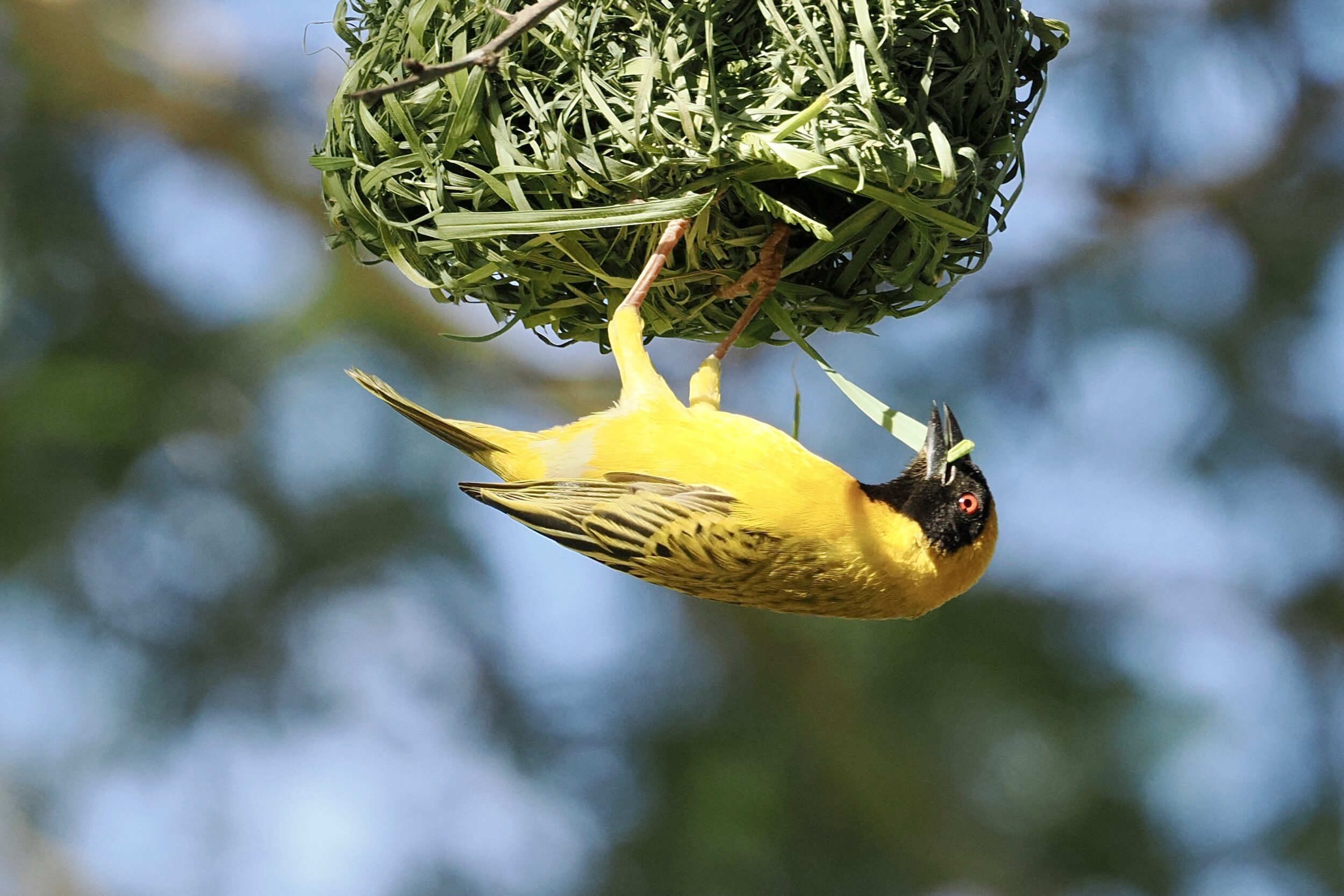As is true of not a few other “country clubs”, the one in Namibia’s capital city is in fact well inside an urban “footprint”.
The Windhoek Country Club Resort offers luxurious accommodation, decent food, a casino, an 18 hole golf course, a gym, and extravagantly “Afrokitsch” reception and dining spaces.
To the astonishment of this non-gambler, non-golfer – and non-fan of Afrokitsch – my beloved and I there enjoyed an unforgettable wildlife experience, just a couple of human footsteps away from “our” room!
Pictured above is a southern masked weaver, weaving its nest.
This individual was right in front of “our” room, which overlooked the country club’s spectacular and well-watered garden/terrace, part of which is pictured below.
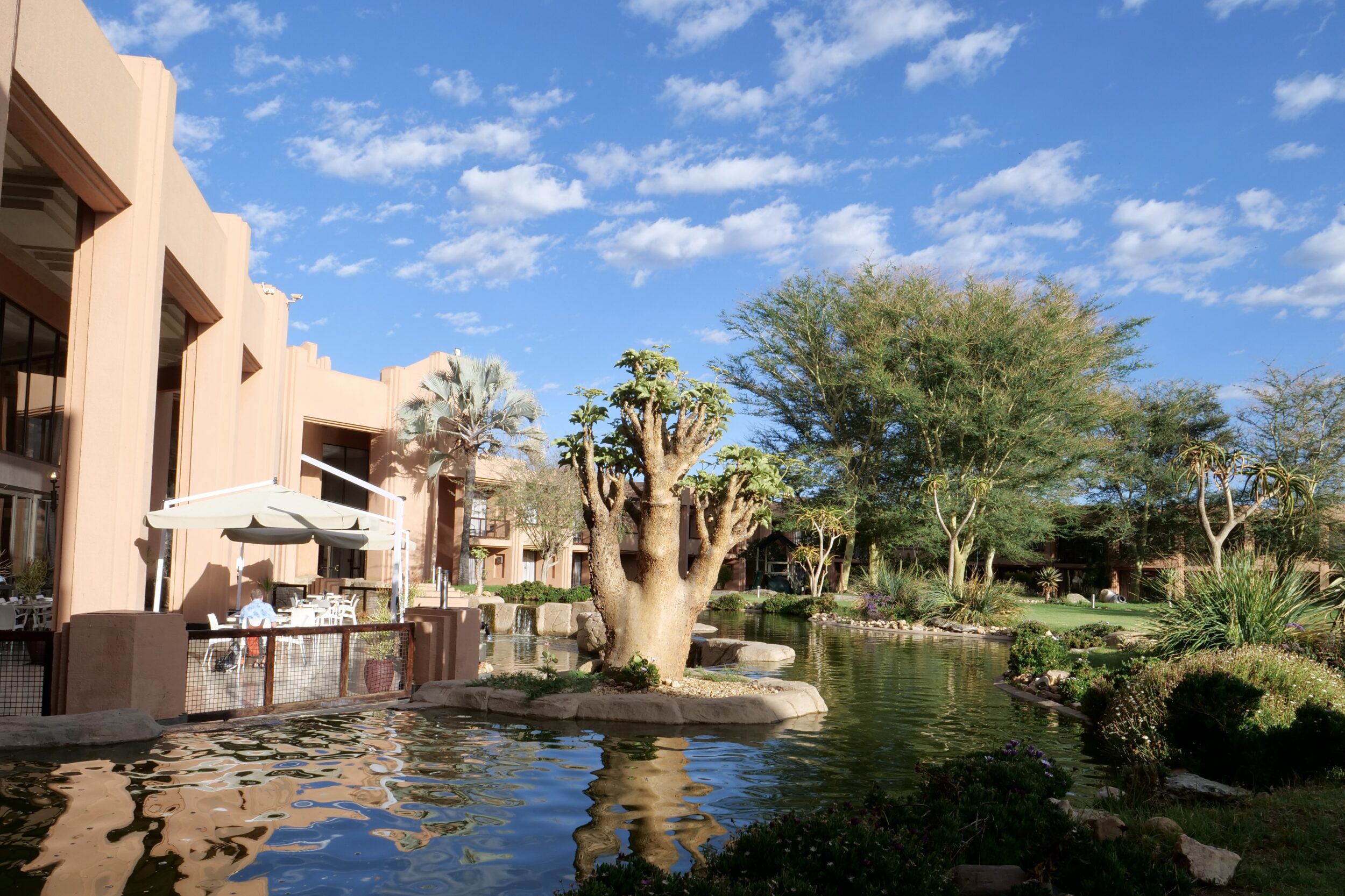
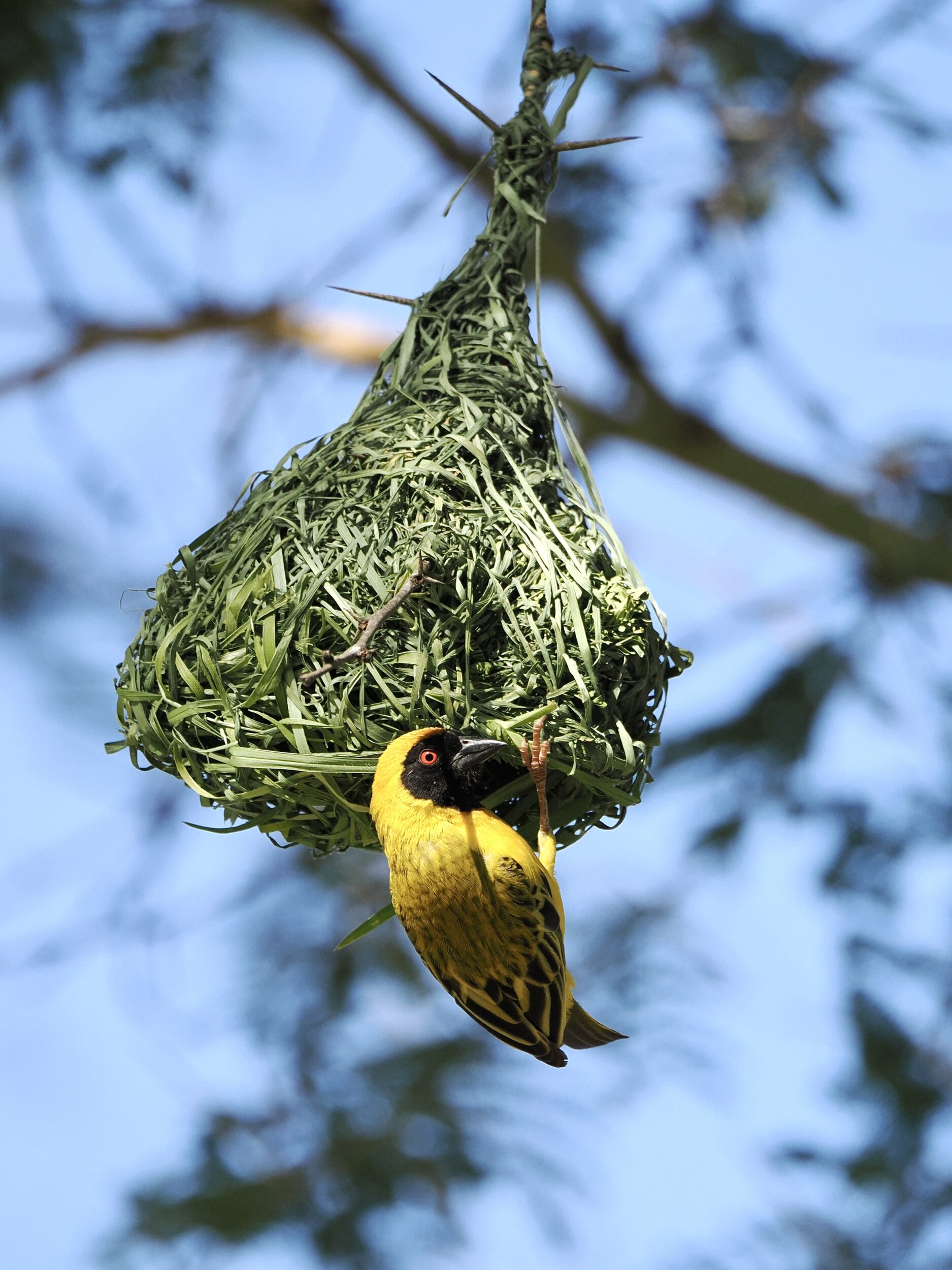
The southern masked weaver is one of more than one hundred species of weaver birds.
Most of them live in Africa and/or Asia.
Some build/inhabit a single, stand-alone nest.
Others live in colonies.
Some species build astonishing “apartment block” structures in which hundreds of nesting pairs raise their young.
In every case, construction techniques are essentially the same:
The nest begins with a single strand, knotted to a branch with beak and claw. After that, the technique is just like any other weaving pattern-the strands are threaded through others at opposing angles. From the first knot, an entrance is built. The aperture is important. It must be large enough for the birds to enter, but small enough to restrict predators from entering. The ideal design has a long tube that connects to a chamber, which will optimistically serve as the nursery.
The italicised quotation comes from a well illustrated, nicely succinct article called “Textiles in the Trees: Weaver Bird Nests”; you can see/read all of it, here.
At breakfast time on the third November day of 2022 various other birds were also “living it up at the country club”.
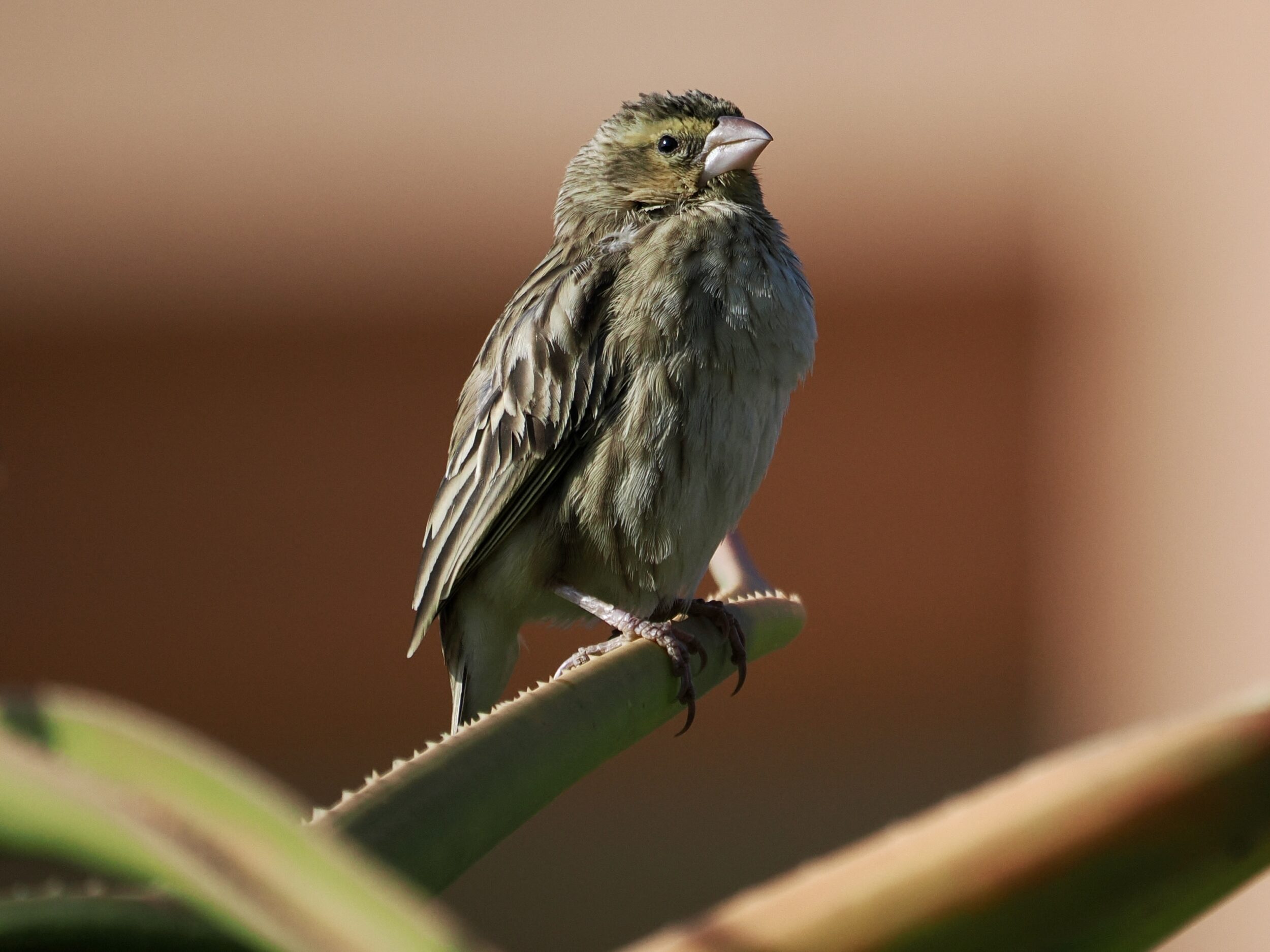
I am sure that the small bird pictured above is an eater of seeds.
I think that it may be a female southern red bishop. (the breeding male’s much more vivid plumage does live up to the name)
I think the nectar-eating bird below is a juvenile male; probably, he is a scarlet-chested sunbird.
Adult males are a much more dramatic study in “satanic” red and “bible” black.
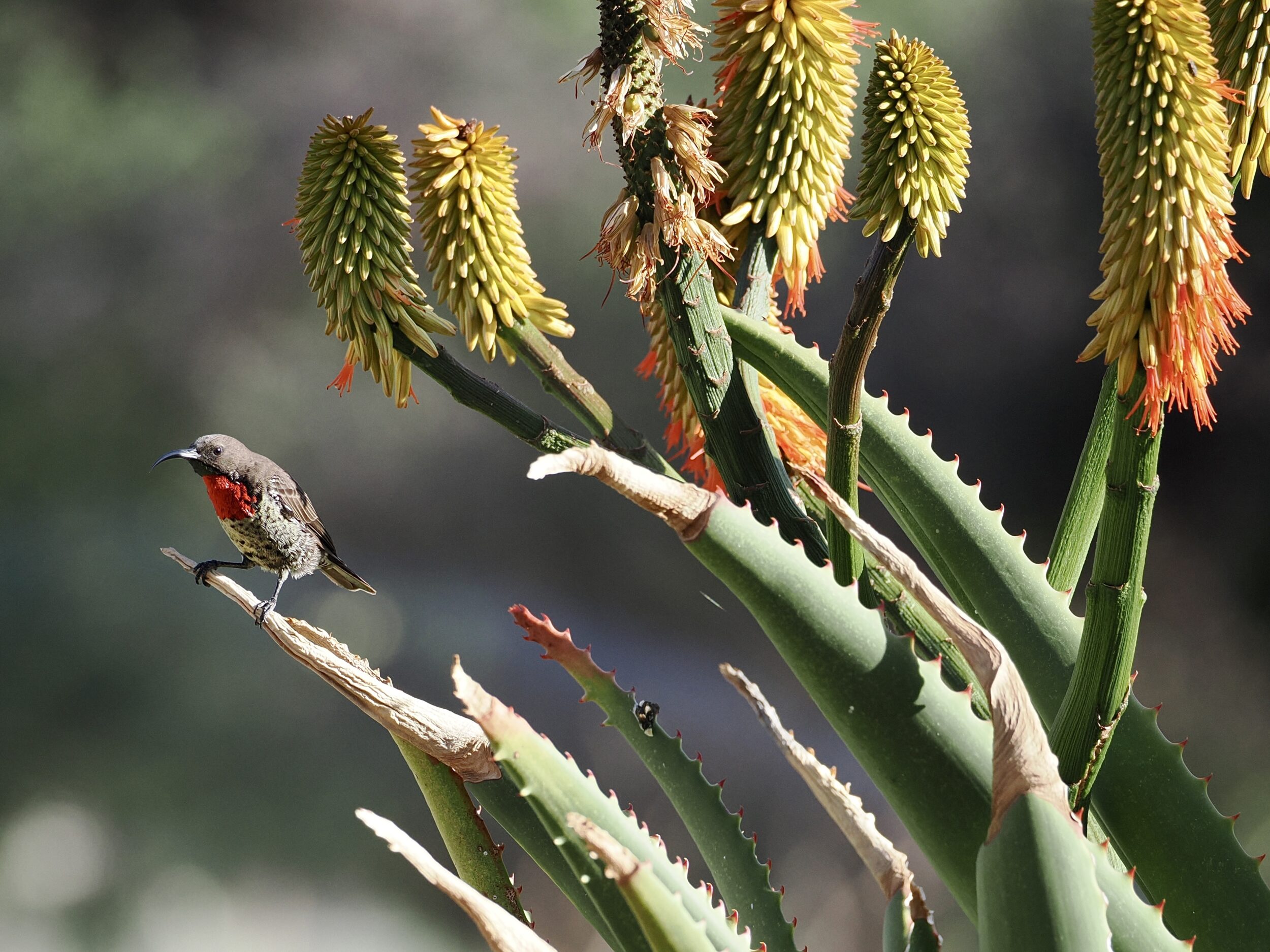
Later that same day, we were a world far away from any country club, or urban area…as you will see in the next multi-image Namibian post.
